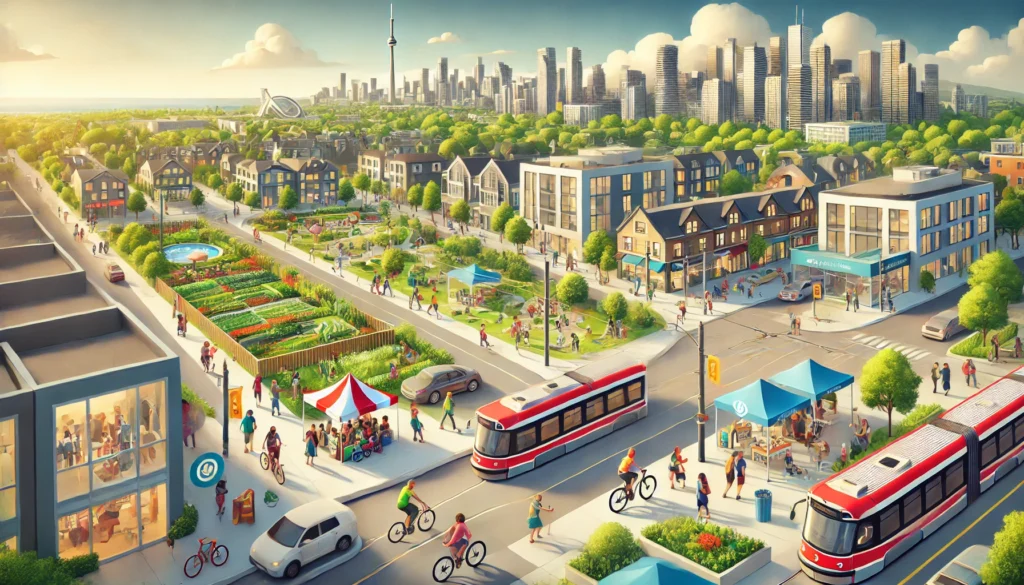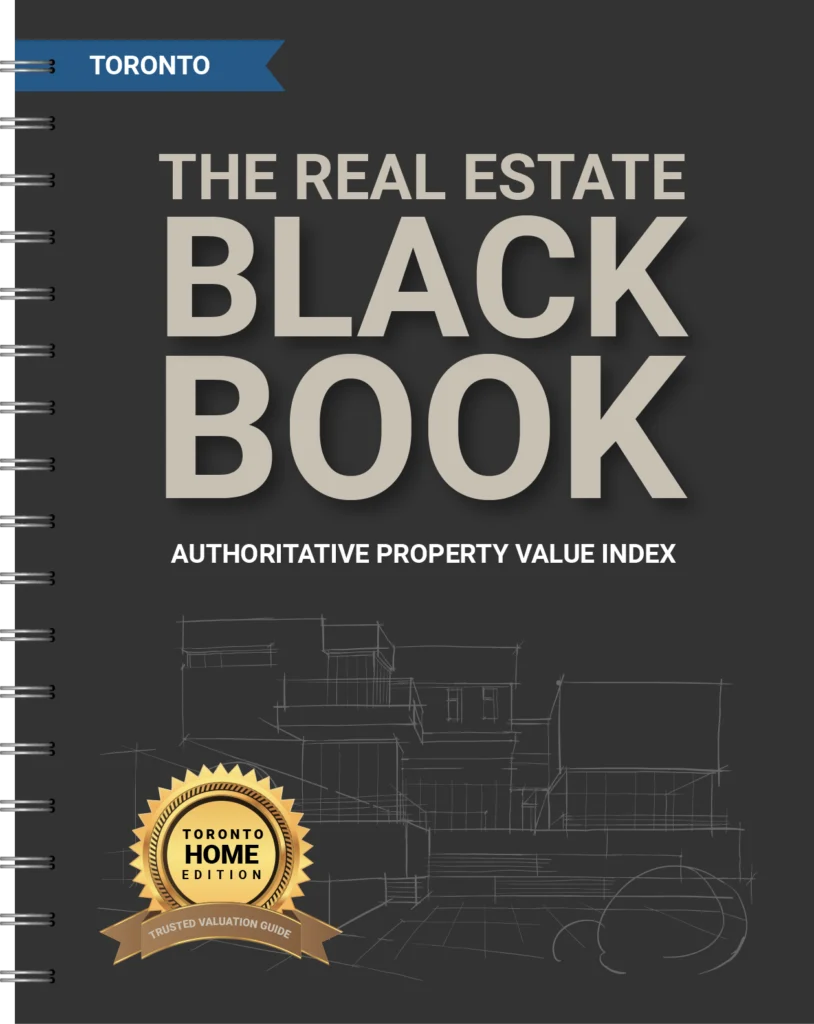Introduction: The Importance of Neighbourhood Selection
When it comes to choosing a place to live, the decision often extends beyond the confines of the property itself. While the features of a house or apartment play a critical role in the selection process, the surrounding neighbourhood is equally significant. The environment in which a home is situated can profoundly impact the quality of life, influencing everything from daily routines to long-term satisfaction.
Neighbourhood selection encompasses a multitude of factors that contribute to the overall living experience. These factors range from the availability of essential amenities and the quality of local schools to the level of safety and the sense of community. For those considering Toronto, understanding these neighbourhood dynamics is crucial. Toronto offers a variety of living environments, each with its own unique characteristics and challenges.
I will delve into the key factors that should be considered when evaluating neighbourhoods in Toronto. By exploring the negative aspects that could impact a neighbourhood, I’ll aim to provide a comprehensive guide for assessing elements such as traffic congestion, noise levels, crime rates, and the availability of green spaces. These factors, though external to the home, are integral to ensuring a fulfilling and harmonious living experience.
In essence, choosing the right neighbourhood is a pivotal part of the home selection process. By thoroughly understanding the various external influences, individuals can make informed decisions that align with their lifestyle and preferences.
Safety and Crime Rates
When evaluating neighbourhoods in Toronto, one of the most critical factors to consider is the safety of the area, which can significantly affect its desirability. Safety is often gauged by analyzing crime rates, providing insight into the prevalence and types of criminal activities within the neighbourhood. Understanding these statistics is imperative for making an informed decision about where to live.
Crime rates are typically divided into categories such as property crime and violent crime:
- Property crime: Property crime includes offences like burglary, theft, and vandalism, which can impact your sense of security and the likelihood of property damage.
- Violent crime: Violent crime encompasses more severe offences, including assault, robbery, and homicide. These types of crimes can pose a direct threat to personal safety and are generally given more weight when assessing the overall safety of a neighbourhood.
Another important aspect to consider is the trend of these crime rates over time. A neighbourhood with high crime rates that are steadily decreasing may be undergoing positive changes, such as increased police presence or community initiatives, making it a potentially safer place to live in the future. Conversely, an area with escalating crime rates might indicate emerging issues that could affect its desirability in the long run.
For those looking to find reliable crime data specific to Toronto, there are several resources available. The Toronto Police Service provides detailed crime statistics and maps that can be accessed online. Websites like DoorScore.ca offer interactive tools that allow users to view crime data by neighbourhood and address.
By thoroughly examining crime rates and trends, individuals can gain a comprehensive understanding of the safety of a neighbourhood, ultimately guiding them towards a more secure and comfortable living environment in Toronto.
Access to Public Services and Amenities
When evaluating neighbourhoods in Toronto, access to public services and amenities plays a pivotal role in determining the overall quality of life. These factors, often overlooked during the initial stages of home buying, are crucial for ensuring long-term satisfaction and convenience for residents.
- Availability and quality of schools: For families with children, the presence of reputable educational institutions nearby can significantly influence the choice of neighbourhood. Good schools not only provide excellent education but also contribute to the community’s overall development, fostering a supportive and enriching environment for young learners.
- Healthcare facilities: Healthcare facilities are another essential aspect to consider. Proximity to hospitals, clinics, and specialized medical services ensures that residents can access necessary healthcare without undue delay. This becomes especially vital for families with elderly members or individuals with chronic health conditions. Quality healthcare services are a cornerstone of a well-rounded neighbourhood, offering peace of mind and enhancing the area’s overall desirability.
- Public transportation: Public transportation is integral to urban living, particularly in a bustling city like Toronto. Efficient and reliable transit options can greatly simplify daily commutes, reducing travel time and stress. Neighbourhoods with extensive public transportation networks, including buses, subways, and streetcars, offer greater connectivity and convenience, making them highly attractive for professionals and families alike.
- Parks and recreational facilities: Parks and recreational facilities also contribute significantly to the allure of a neighbourhood. Green spaces, playgrounds, and community centers provide residents with opportunities for outdoor activities, relaxation, and social interaction. These amenities are vital for promoting a healthy and active lifestyle, encouraging community engagement, and enhancing the overall livability of an area.
In summary, access to public services and amenities such as schools, healthcare facilities, public transportation, and recreational areas are crucial considerations when evaluating neighbourhoods in Toronto. These factors not only enhance the day-to-day living experience but also contribute to long-term satisfaction and community well-being.
Traffic and Commute Times
When evaluating neighbourhoods in Toronto, understanding traffic congestion and commute times is crucial. Toronto’s traffic patterns, especially during peak hours, can significantly affect daily life and the overall desirability of a neighbourhood. Many Toronto residents face long commutes, particularly those who rely on private vehicles. Consequently, the proximity of a neighbourhood to major highways such as the 401, the Gardiner Expressway, and the Don Valley Parkway can be a vital consideration. Neighbourhoods with easy access to these thoroughfares tend to offer more convenience and reduced travel times.
Public transit options are another critical factor. Toronto’s public transportation system, primarily operated by the Toronto Transit Commission (TTC), includes subways, buses, and streetcars. Neighbourhoods well-served by the TTC can offer substantial benefits, such as shorter commute times and reduced reliance on cars. Additionally, the availability of GO Transit, which provides regional bus and train services, can further enhance a neighbourhood’s connectivity and appeal.
The stress and time costs associated with long commutes cannot be overlooked. Extended travel times can lead to decreased productivity, increased stress levels, and less time for family and personal pursuits. Therefore, prospective homebuyers should consider neighbourhoods that offer a balance between residential tranquility and accessible commuting routes. Areas with dedicated bike lanes, walkable streets, and car-sharing options can also contribute to a more manageable and pleasant commuting experience.
Noise and Pollution Levels
When evaluating neighbourhoods in Toronto, noise and pollution levels are critical factors that can significantly impact residents’ quality of life. Various sources contribute to these environmental concerns, and understanding them can help prospective homeowners make informed decisions.
- Industrial areas: Industrial areas are prominent sources of both noise and pollution. Factories and manufacturing plants often operate around the clock, emitting not only noise but also chemicals and particulate matter into the surrounding air. Neighbourhoods in close proximity to these industrial zones may experience higher levels of air pollution, which can affect respiratory health and overall well-being.
- Major roads and highways: Major roads and highways are another significant source of noise pollution in Toronto. Constant traffic flow, especially during peak hours, can lead to elevated noise levels that disrupt daily activities and even sleep patterns. Additionally, exhaust emissions from vehicles contribute to air pollution, posing long-term health risks. Residents near major thoroughfares should be aware of these factors when considering a neighbourhood.
- Construction: Construction sites are also notable contributors to noise pollution. Toronto’s rapid urban development often results in numerous construction projects scattered throughout the city. While these developments can be a sign of economic growth, the accompanying noise from machinery and construction activities can be a considerable disturbance for nearby residents. It’s essential to consider both current and planned construction projects when evaluating a neighbourhood.
To assess noise and pollution levels in a potential neighbourhood, several strategies can be employed. First, visiting the area at different times of the day and week can provide a comprehensive understanding of the noise levels. Additionally, online resources such as community forums and municipal websites often offer information on local pollution and noise reports. Finally, consulting with current residents can yield valuable insights into the environmental conditions of the neighbourhood.
Economic Stability and Property Values
Economic stability is a pivotal factor when evaluating neighbourhoods in Toronto. Understanding the economic health of an area involves a comprehensive look at local employment rates, business vitality, and property value trends. These indicators collectively offer insights into the long-term viability and growth potential of a community.
- Economic health: Assessing the economic health of a neighbourhood begins with examining local employment rates. Areas with low unemployment tend to attract more residents and businesses, fostering a vibrant and sustainable community. Employment opportunities within or near the neighbourhood are crucial as they influence the local economy and contribute to a stable environment. Additionally, a high employment rate often correlates with better municipal services, infrastructure, and overall quality of life.
- Business vitality: Business vitality is another significant indicator of economic stability. A neighbourhood with a thriving business environment, characterized by a diverse mix of retail, dining, and service-oriented establishments, signifies economic robustness. The presence of successful businesses not only enhances the convenience and appeal of the area but also generates revenue and job opportunities, further stabilizing the local economy. Observing the types and success rates of businesses can provide valuable insights into the economic dynamics at play.
- Property value trends: Property value trends are equally important when assessing neighbourhoods. Consistent appreciation in property values reflects a stable and desirable area, while volatile or declining values may signal underlying economic issues. Reviewing historical property value data can help predict future trends and potential returns on investment. It’s essential to consider whether the neighbourhood has experienced steady growth, stagnation, or decline in property values over the years.
Understanding these economic factors is vital as they can significantly impact future property values and community development. A neighbourhood with strong economic stability not only promises potential financial returns but also contributes to a higher quality of life for its residents. Therefore, when evaluating neighbourhoods in Toronto, a thorough analysis of economic indicators is indispensable in making an informed decision.
Community and Social Environment
In Toronto, it is crucial to consider the community and social environment, as it significantly contributes to the overall living experience. A vibrant community with active engagement can greatly enhance the quality of life. One of the key indicators of a strong community is the presence of various community activities and events. These activities not only provide entertainment and relaxation but also foster social connections among residents. Look for neighbourhoods that regularly host festivals, farmers’ markets, and local gatherings, as these events often reflect a tight-knit community.
- Neighbourhood organizations: Neighbourhood organizations play a pivotal role in shaping the community’s social fabric. Active neighbourhood associations, volunteer groups, and local clubs can indicate a high level of community involvement. These organizations often work towards common goals such as improving local amenities, organizing events, and addressing residents’ concerns. Engaging with such groups can provide a sense of belonging and an opportunity to contribute to the community’s well-being.
- Diversity and inclusivity: Diversity and inclusivity are also important factors when assessing the social environment of a Toronto neighbourhood. Areas that boast a mix of cultures, backgrounds, and perspectives tend to be more vibrant and dynamic. Living in a diverse community can offer numerous benefits, including exposure to different traditions, cuisines, and viewpoints. It can also foster a more inclusive atmosphere where everyone feels welcome and valued. Look for neighbourhoods that celebrate their diversity through cultural festivals, inclusive community programs, and multicultural amenities.
- Social cohesion: Social cohesion, or the sense of solidarity and connectedness among residents, is another critical aspect to consider. Neighbourhoods where people know their neighbours and look out for each other tend to be safer and more supportive. This can be gauged through informal interactions, such as friendly conversations on the street or community-led initiatives aimed at helping those in need. Ultimately, a strong sense of community can significantly enhance the desirability of a neighbourhood, making it a more pleasant and supportive place to live.
Future Development and Urban Planning
Future development and urban planning play a crucial role in evaluating the desirability of Toronto neighbourhoods. As cities evolve, neighbourhoods are continuously shaped by planned projects and infrastructural changes. Understanding these developments can provide valuable insights into the future dynamics of a neighbourhood, influencing factors such as property values, quality of life, and community amenities.
One of the primary benefits of being aware of future development plans is the potential for increased property value. New infrastructure, such as public transportation networks, parks, and commercial centres, can significantly enhance a neighbourhood’s appeal. For instance, the extension of Toronto’s subway lines or the introduction of light rail transit (LRT) can improve connectivity, making certain areas more attractive to homebuyers and investors. Additionally, the development of new residential and commercial projects can lead to a more vibrant community atmosphere, offering residents a broader range of services and lifestyle options.
However, future development can also bring challenges. Increased construction activity can lead to temporary disruptions, such as noise, traffic congestion, and changes in the local landscape. Moreover, rapid development may result in gentrification, potentially displacing long-time residents and altering the neighbourhood’s character. It is essential to weigh these potential drawbacks against the benefits when considering a neighbourhood for relocation or investment.
To make informed decisions, it is advisable to stay updated on Toronto’s urban planning initiatives. The City of Toronto’s official website provides comprehensive information on ongoing and upcoming projects, zoning changes, and community consultations. Additionally, local community boards and planning departments often hold public meetings where residents can learn about and provide input on proposed developments. Engaging with these resources can help individuals better understand the trajectory of a neighbourhood and anticipate how future changes may impact their living environment.
Conclusion
In conclusion, selecting the right neighbourhood in Toronto requires a comprehensive understanding of various external factors that influence the overall living experience and long-term satisfaction of residents. Safety, access to public services, traffic patterns, environmental conditions, economic stability, and the social environment all play significant roles. Evaluating safety through crime rates, ensuring proximity to quality schools, healthcare facilities, and public transportation, and understanding traffic and commute times are essential. Assessing noise and pollution levels ensures a comfortable living environment, while economic stability and property value trends offer insights into long-term viability. A strong community and social environment foster a sense of belonging, and staying informed about future development and urban planning helps anticipate changes that may impact the neighbourhood’s appeal.
By considering these factors, individuals can make informed decisions that align with their lifestyle preferences and long-term goals, creating a fulfilling and harmonious living experience in Toronto.



